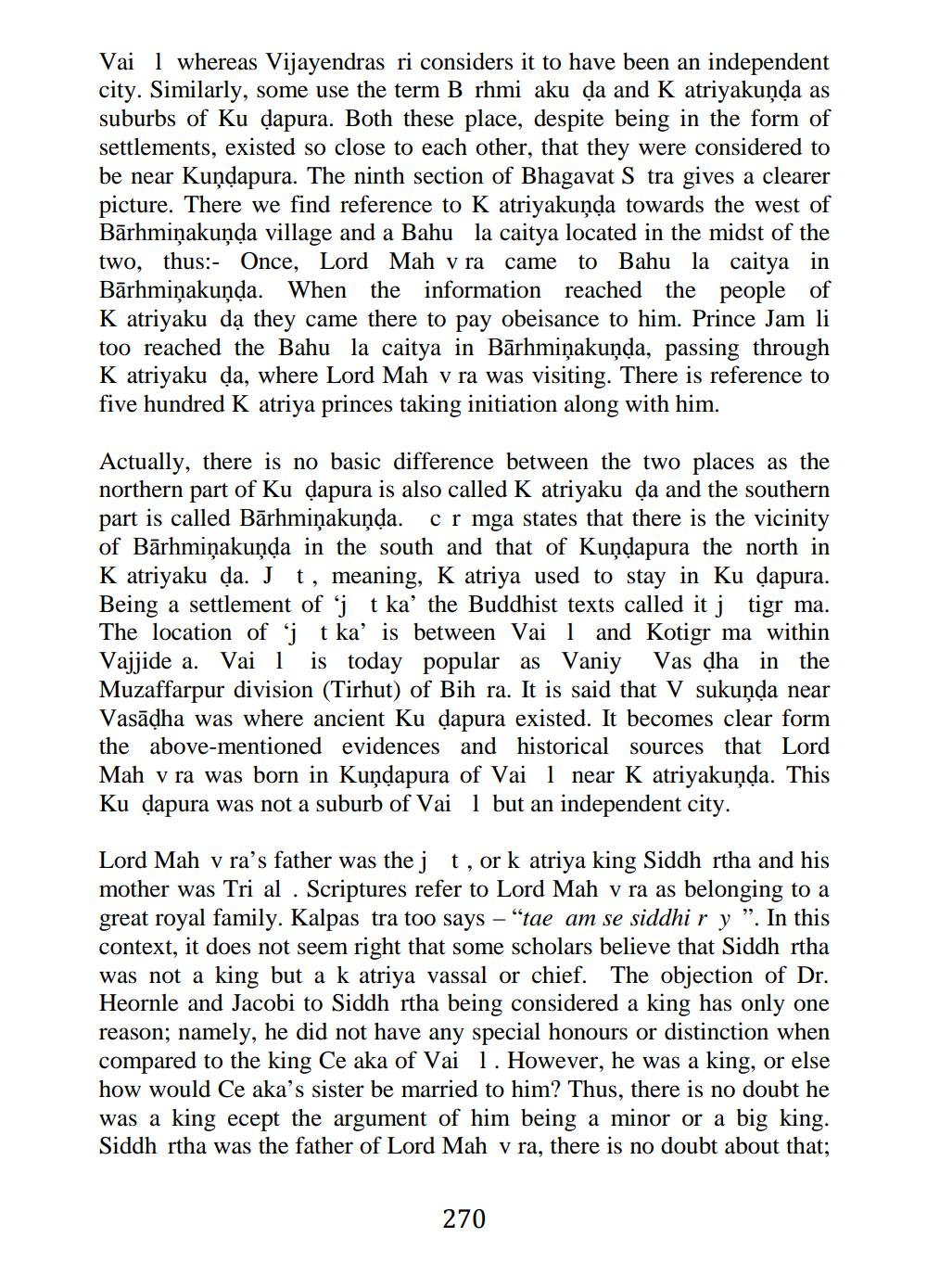________________
Vai I whereas Vijayendras ri considers it to have been an independent city. Similarly, some use the term B rhmi aku ḍa and K atriyakuṇḍa as suburbs of Ku ḍapura. Both these place, despite being in the form of settlements, existed so close to each other, that they were considered to be near Kundapura. The ninth section of Bhagavat S tra gives a clearer picture. There we find reference to K atriyakunda towards the west of Bārhmiņakuṇḍa village and a Bahu la caitya located in the midst of the two, thus:- Once, Lord Mah v ra came to Bahu la caitya in Bārhmiņakuṇḍa. When the information reached the people of K atriyaku da they came there to pay obeisance to him. Prince Jam li too reached the Bahu la caitya in Bārhmiņakuṇḍa, passing through K atriyaku da, where Lord Mah v ra was visiting. There is reference to five hundred K atriya princes taking initiation along with him.
Actually, there is no basic difference between the two places as the northern part of Ku ḍapura is also called K atriyaku ḍa and the southern part is called Bārhmiņakuṇḍa. c r mga states that there is the vicinity of Bārhmiņakuṇḍa in the south and that of Kundapura the north in K atriyaku da. J t, meaning, K atriya used to stay in Ku ḍapura. Being a settlement of 'j t ka' the Buddhist texts called it j tigr ma. The location of 'j t ka' is between Vai 1 and Kotigr ma within Vajjide a. Vai 1 is today popular as Vaniy Vas dha in the Muzaffarpur division (Tirhut) of Bih ra. It is said that V sukunda near Vasāḍha was where ancient Ku ḍapura existed. It becomes clear form the above-mentioned evidences and historical sources that Lord Mah v ra was born in Kundapura of Vai 1 near K atriyakuṇḍa. This Ku dapura was not a suburb of Vai 1 but an independent city.
Lord Mah v ra's father was the jt, or k atriya king Siddh rtha and his mother was Tri al . Scriptures refer to Lord Mah v ra as belonging to a great royal family. Kalpas tra too says "tae am se siddhi r y ". In this context, it does not seem right that some scholars believe that Siddh rtha was not a king but a k atriya vassal or chief. The objection of Dr. Heornle and Jacobi to Siddh rtha being considered a king has only one reason; namely, he did not have any special honours or distinction when compared to the king Ce aka of Vai 1. However, he was a king, or else how would Ce aka's sister be married to him? Thus, there is no doubt he was a king ecept the argument of him being a minor or a big king. Siddh rtha was the father of Lord Mah v ra, there is no doubt about that;
270
-




